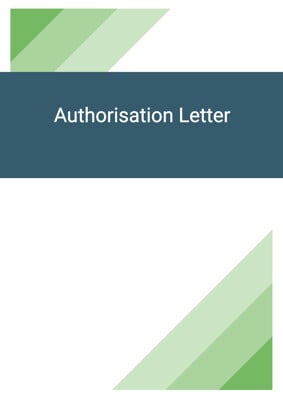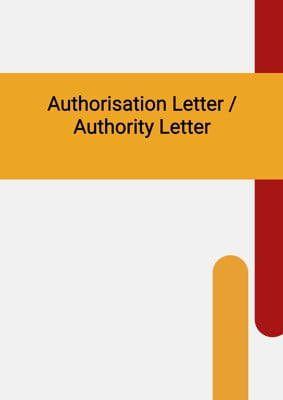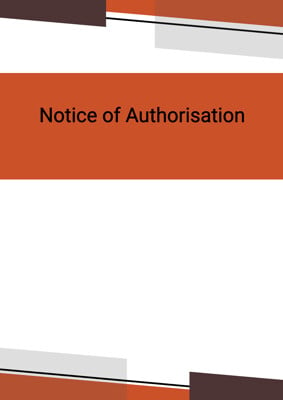How to Tailor the Document for Your Need?
01
Create Document
Click "Create Document" button and the document will be prepared with your account details automatically filled in.
02
Fill Information
Please fill in any additional information by following the step-by-step guide on the left hand side of the preview document and click the "Next" button.
03
Get Document
When you are done, click the "Get Document" button and you can download the document in Word or PDF format.
04
Review Document
Please review the document carefully and make any final modifications to ensure that the details are correct before sending to the addressee.
Document Preview
Document Description
The 'Appointment Letter' is a document that is used to formally appoint an individual or a company as an agent or representative. This letter outlines the terms and conditions of the appointment, including the powers and duties of the appointed party. The importance of this document lies in its ability to establish a clear understanding between the parties involved and to provide legal protection.
The entire document consists of several sections. The first section includes the account information, such as the first name, last name, and address. The current date is also mentioned in this section. The second section is addressed to the party being appointed and begins with a salutation. It explains that the party has requested the appointment and states that the letter sets out the terms of the appointment.
The third section discusses the acceptance of the appointment. It states that the appointed party will accept the appointment in a manner deemed appropriate and will perform the powers and duties related to the appointment. It also mentions that the appointed party has the discretion to exercise their powers without any obligation.
The fourth section includes optional clauses depending on the specific circumstances. If there are appointment terms, they are enclosed for the party's perusal. If there are fees involved, the party agrees to pay the fees and reimburse the appointed party for any costs incurred. The fifth section limits the liability of the appointed party for any failure to perform their duties, except in cases of material failure due to negligence or wilful default. It also clarifies that the appointed party's obligations are solely to the party appointing them.
The sixth section discusses indemnity. If the indemnity clause is included, the party appointing the agent agrees to indemnify the appointed party against any liabilities arising from their actions as an agent. The seventh section mentions the duration of the appointment, stating that it is valid until a specified term. The eighth section discusses termination, stating that either party has the right to terminate the appointment with a specified notice period.
The ninth section states that the appointment is governed by the laws of a specific jurisdiction. The tenth section includes optional clauses related to the agreement. If the party agrees to the appointment terms, they are requested to sign and return a copy of the letter. The appointment will take effect upon receiving the agreement within a specified number of days.
The last section includes the signature and name of the appointing party, confirming their agreement to the terms of the appointment. If the appointing party is an individual, they confirm their agreement and intention to be legally bound. If the appointing party is a company, the confirmation is made on behalf of the company by a designated contact person.
Each section of the document serves a specific purpose and contributes to establishing a clear and legally binding appointment between the parties involved.
How to use this document?
To use the 'Appointment Letter' effectively, follow these steps:
1. Provide the necessary account information, including the first name, last name, and address.
2. Specify the current date.
3. Determine whether the appointment is for an individual or a company. If it is for an individual, include their name and address. If it is for a company, include the company's name, address, and the contact person's name.
4. Begin the letter with a salutation addressing the party being appointed.
5. Clearly state the purpose of the letter, which is to appoint the party as an agent or representative.
6. Explain that the appointed party has requested the appointment and outline the terms on which they will act.
7. If there are specific appointment terms, enclose them for the party's review.
8. If there are fees involved, specify the amount and payment terms.
9. Limit the liability of the appointed party for any failure to perform their duties, except in cases of material failure due to negligence or wilful default.
10. Clarify that the appointed party's obligations are solely to the party appointing them and do not extend to any assignee of rights.
11. If an indemnity clause is included, state that the party appointing the agent agrees to indemnify them against any liabilities arising from their actions.
12. Specify the duration of the appointment, if applicable.
13. Include a termination clause, stating that either party has the right to terminate the appointment with a specified notice period.
14. State that the appointment is governed by the laws of a specific jurisdiction.
15. If there are any additional agreement clauses, include them and request the party's agreement by signing and returning a copy of the letter.
16. Sign the letter and include the name of the appointing party.
17. If the appointing party is an individual, they should confirm their agreement and intention to be legally bound. If it is a company, the confirmation should be made on behalf of the company by a designated contact person.
By following these steps, you can effectively use the 'Appointment Letter' to establish a clear and legally binding appointment with the appointed party.
Not the right document?
Don’t worry, we have thousands of documents for you to choose from:


















